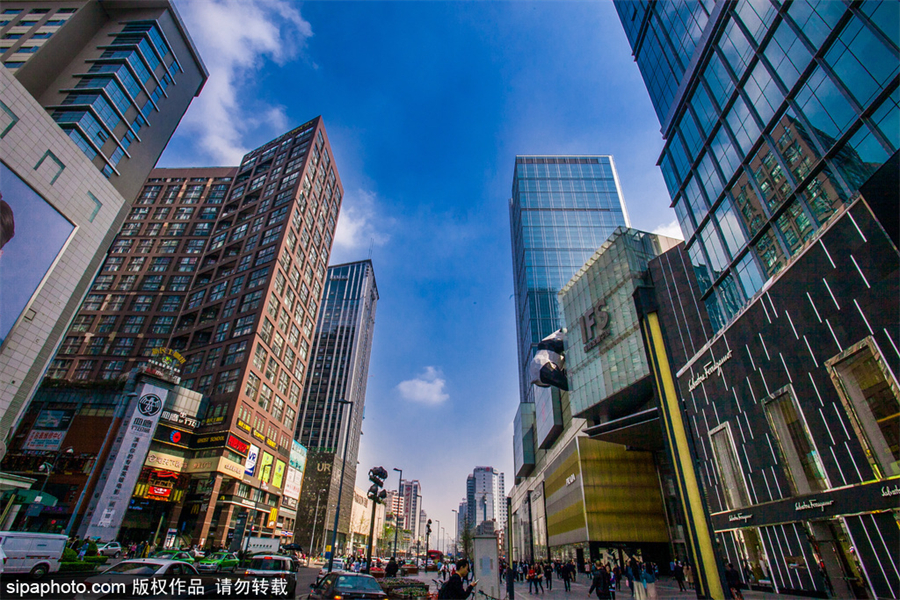Chengdu shows how to plan with smaller neighbors

Chunxi Road, one of the major shopping streets in the center of Chengdu, Southwest China's Sichuan province. [Photo/Sipa]
The Chengdu metropolitan area has made significant progress in urbanization, infrastructure, technological innovation and public services over the last three years, setting an example for the coordinated development of big cities and surrounding smaller ones, on the way to modernization and common wealth, a recent report said.
The area, comprising Chengdu, Deyang, Meishan and Ziyang in Sichuan province, has pioneered the cluster concept. Economic output reached around 2.62 trillion yuan ($377.7 billion) last year. It contributed 46.2 percent to Sichuan and 10.2 percent to central and western China, according to Yin Hong, executive deputy director of the office of the provincial leading group for promoting integrated development of the four cities, at a news conference in Beijing on Wednesday.
In a report released by Tsinghua University's Institute for China Sustainable Urbanization, the area steadily completed urbanization with significant improvements in transportation and infrastructure construction. The gap between urban and rural areas shrank in terms of per capita disposable income and consumption. Indexes on green lifestyle, opening-up, global trade, education and medicine also showed positive trends, the report said.
Yin said the indexes analyzed strength and weakness of the area objectively and scientifically, which will help improve governance and promote sustainable development.
As the first national metropolitan region in central and western China, as approved by the National Development and Reform Commission in 2021, it has an area of 33,133 square kilometers and had a permanent population of 29.96 million in 2021.
According to an official in the leading group, Chengdu, which contributes about 79 percent to the region's GDP, is leveraging its resources to help the other three smaller cities develop. For example, it put increased construction land on borders near the three cities. It also helped break through dead-end expressways of the three cities.
With its advantages in electronic information and other technological fields, Chengdu opened many of its scientific achievements so they can participate in industrial chains for manufacturing and trade. The city is also working to demolish unhealthy competition. For instance, Deyang's advantages in dental medicine equipment manufacturing should be more focused.
In ecology, the four cities have cooperated to protect the river environment, using a team of 12,000 people to patrol and solve problems. It also adopted a dialogue mechanism for officials from different cities to negotiate complex issues.
The area also works to promote tourism, luring visitors with relics, shared ancient Shu civilization culture and famous historic figures. Meishan is the hometown of the poet Su Shi, also known as Su Dongpo, of the Song Dynasty (960-1279).
The report to the 20th National Congress of the Communist Party of China mentioned that a coordinated development pattern of big, medium and small cities should be established based on city clusters and metropolitan areas.
Metropolitan areas play an important role in driving high-quality regional development, leading technological innovation, expanding domestic demands, connecting the global market and improving people's livelihoods, the index report said.
























